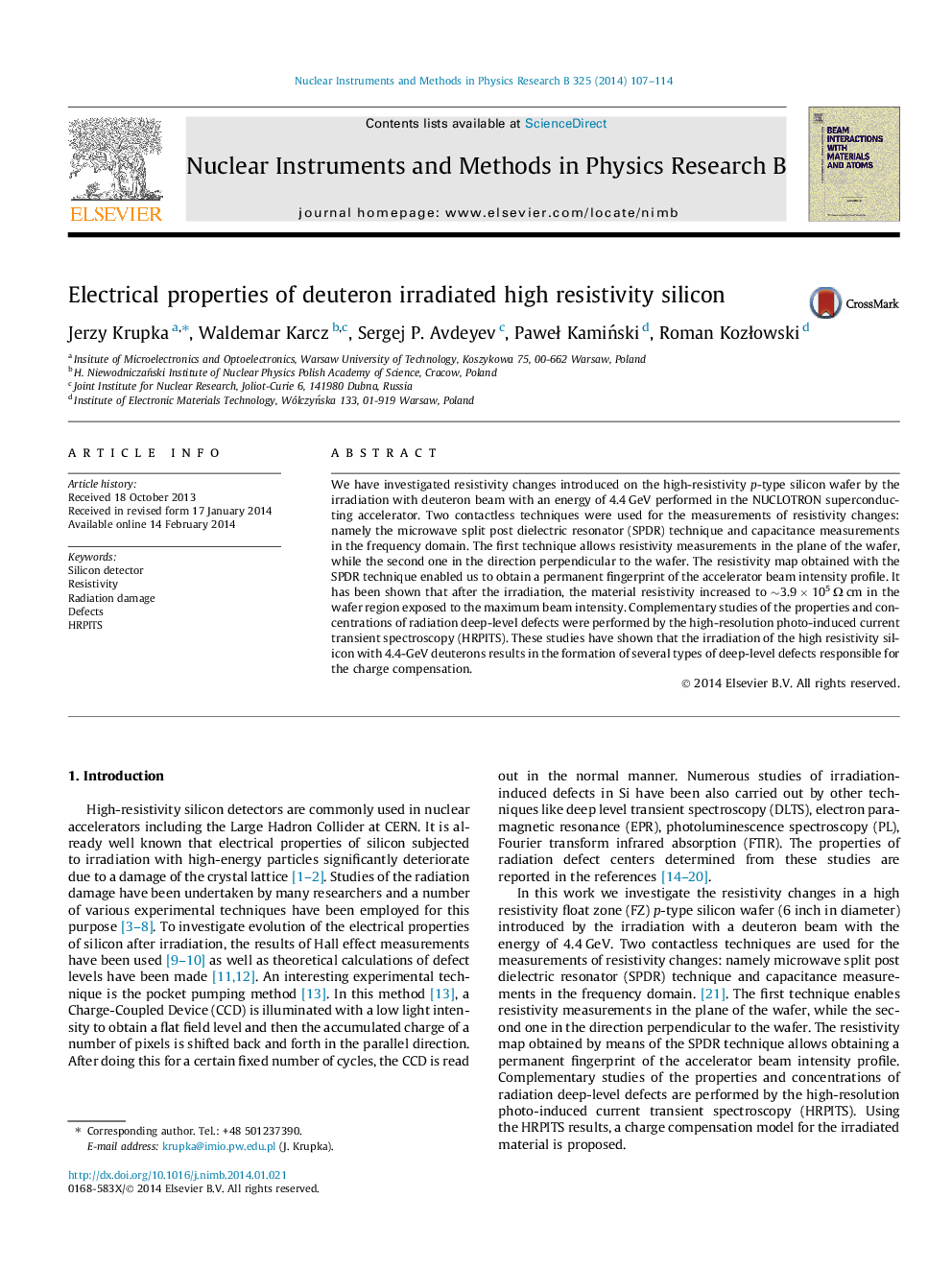| Article ID | Journal | Published Year | Pages | File Type |
|---|---|---|---|---|
| 1681316 | Nuclear Instruments and Methods in Physics Research Section B: Beam Interactions with Materials and Atoms | 2014 | 8 Pages |
We have investigated resistivity changes introduced on the high-resistivity p-type silicon wafer by the irradiation with deuteron beam with an energy of 4.4 GeV performed in the NUCLOTRON superconducting accelerator. Two contactless techniques were used for the measurements of resistivity changes: namely the microwave split post dielectric resonator (SPDR) technique and capacitance measurements in the frequency domain. The first technique allows resistivity measurements in the plane of the wafer, while the second one in the direction perpendicular to the wafer. The resistivity map obtained with the SPDR technique enabled us to obtain a permanent fingerprint of the accelerator beam intensity profile. It has been shown that after the irradiation, the material resistivity increased to ∼3.9 × 105 Ω cm in the wafer region exposed to the maximum beam intensity. Complementary studies of the properties and concentrations of radiation deep-level defects were performed by the high-resolution photo-induced current transient spectroscopy (HRPITS). These studies have shown that the irradiation of the high resistivity silicon with 4.4-GeV deuterons results in the formation of several types of deep-level defects responsible for the charge compensation.
